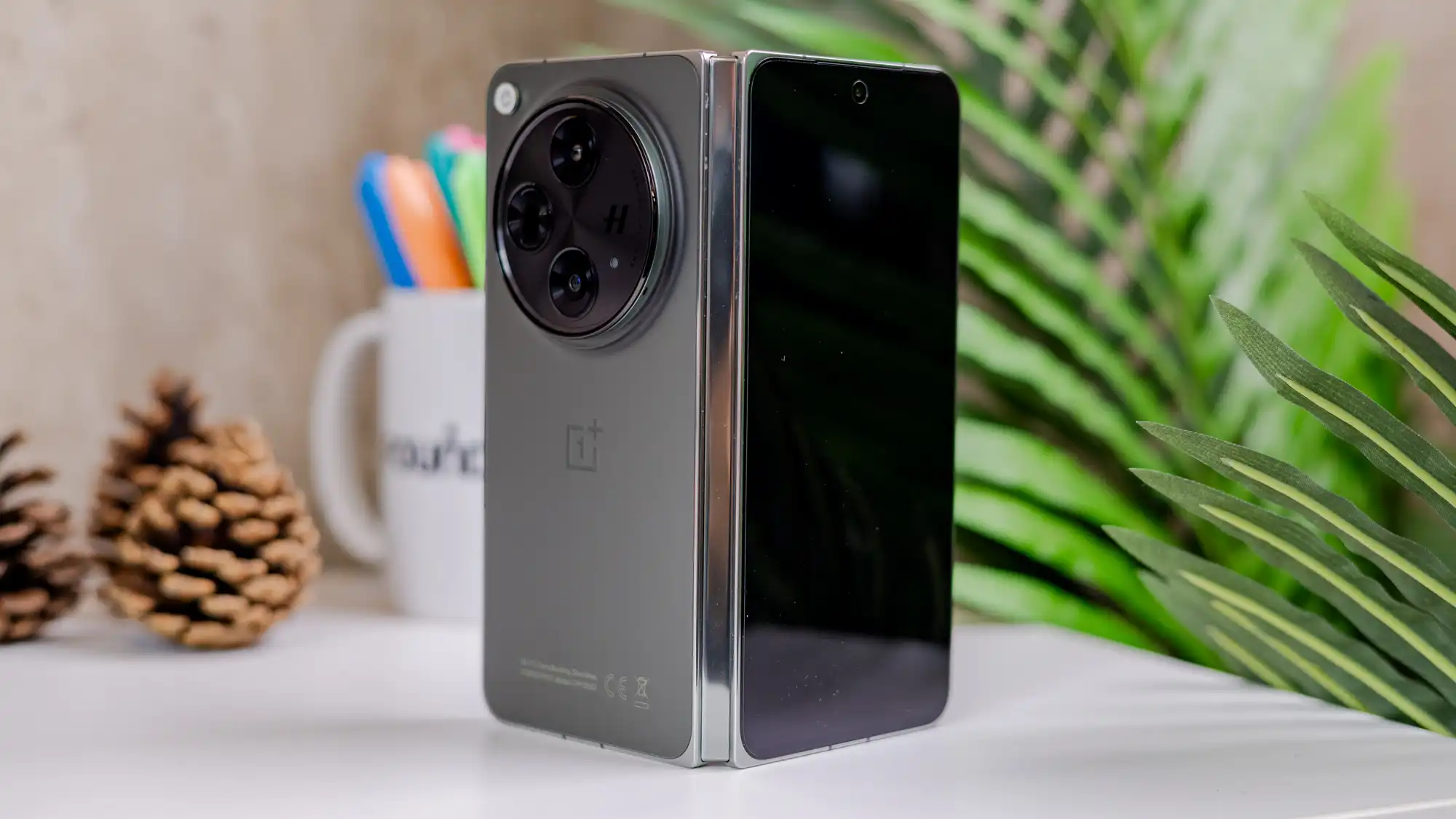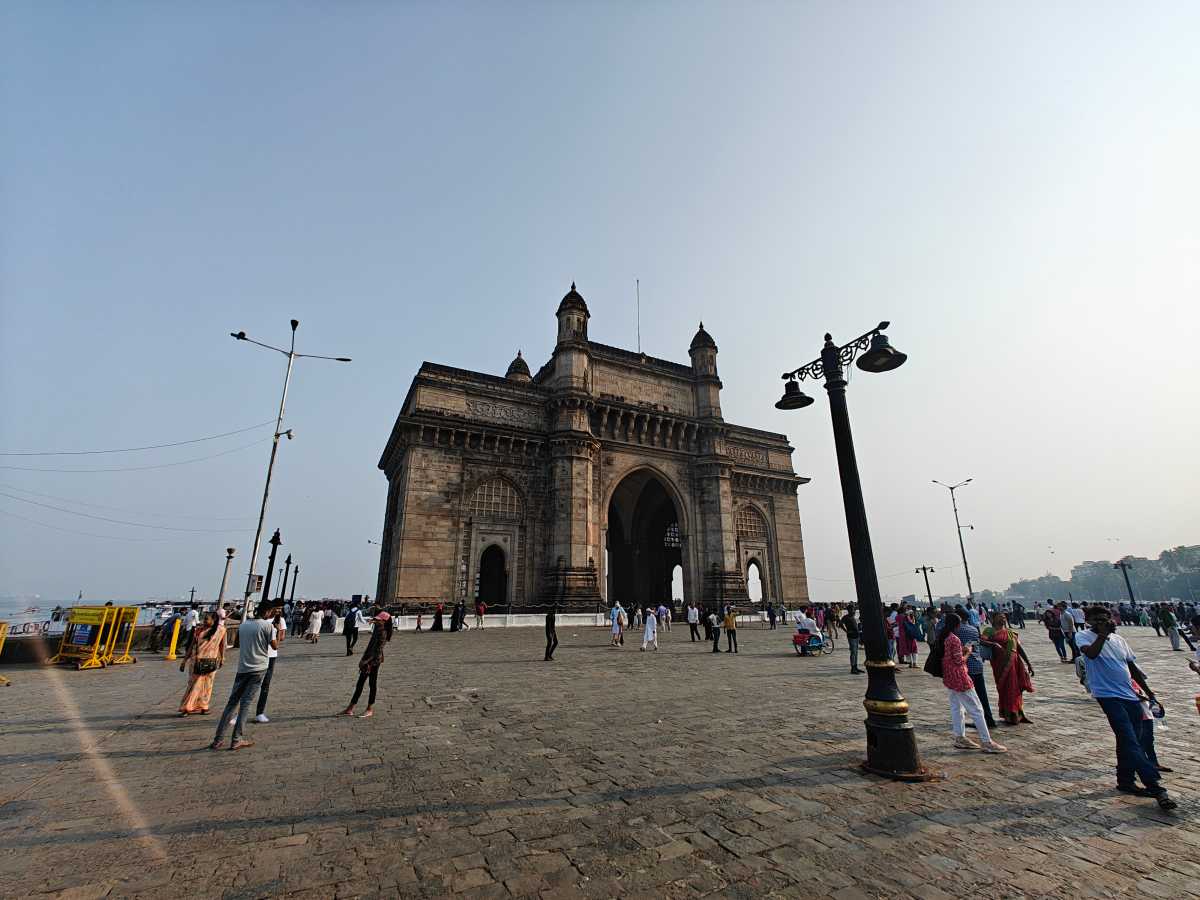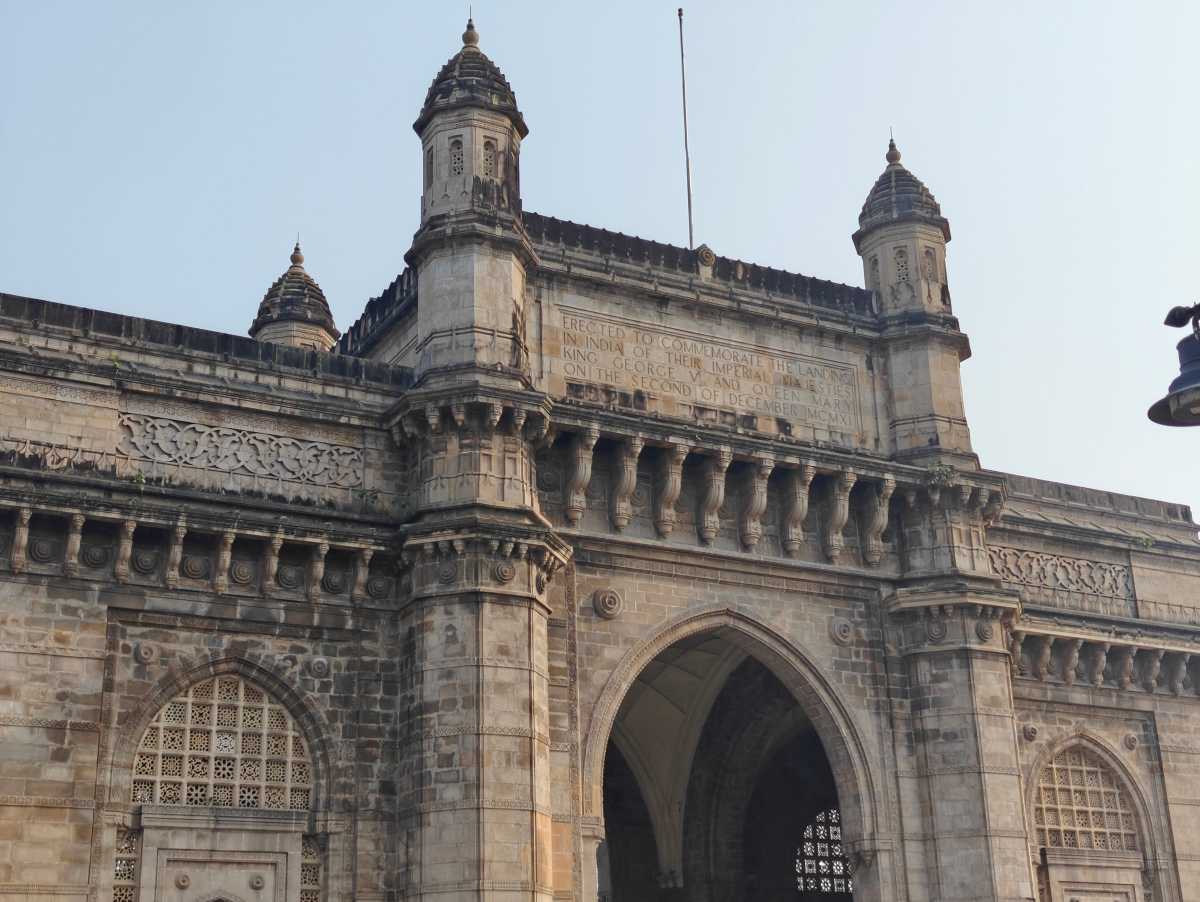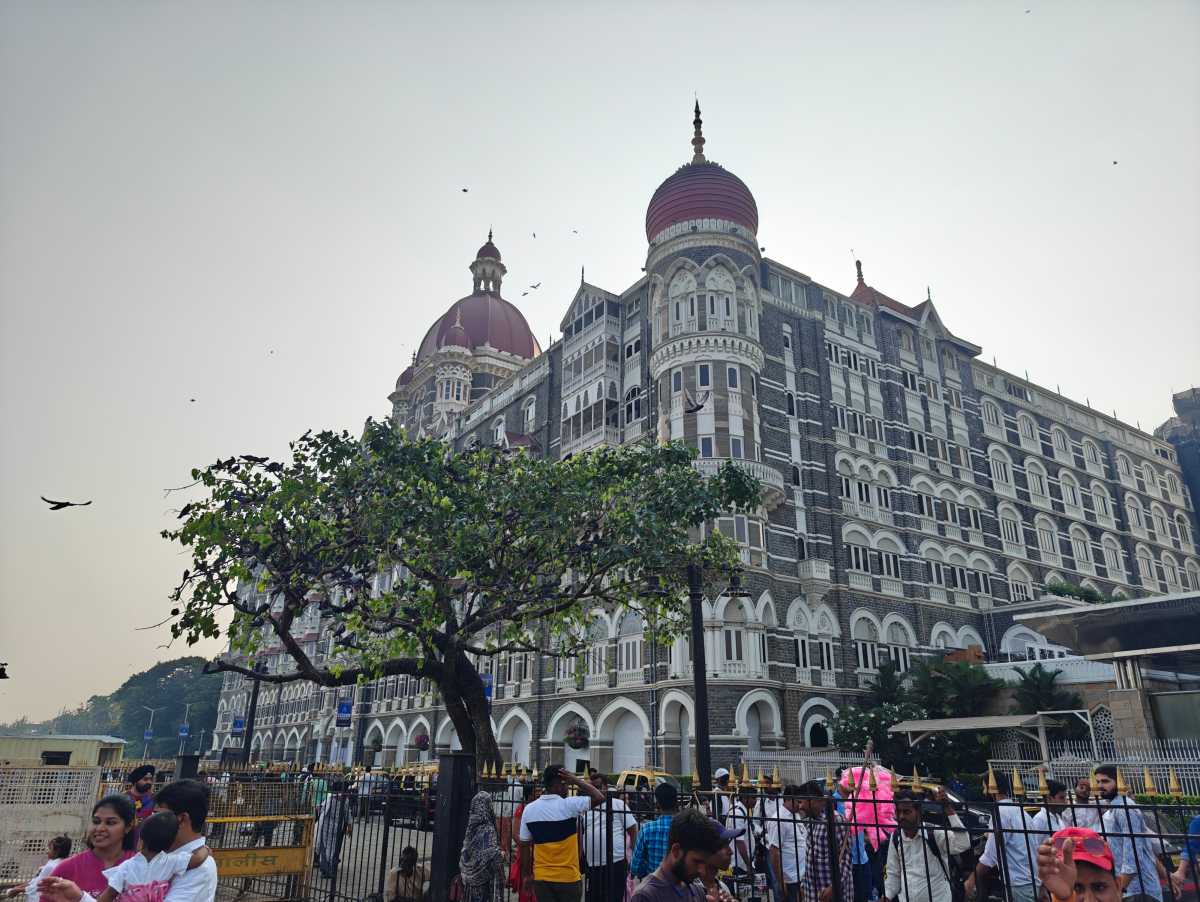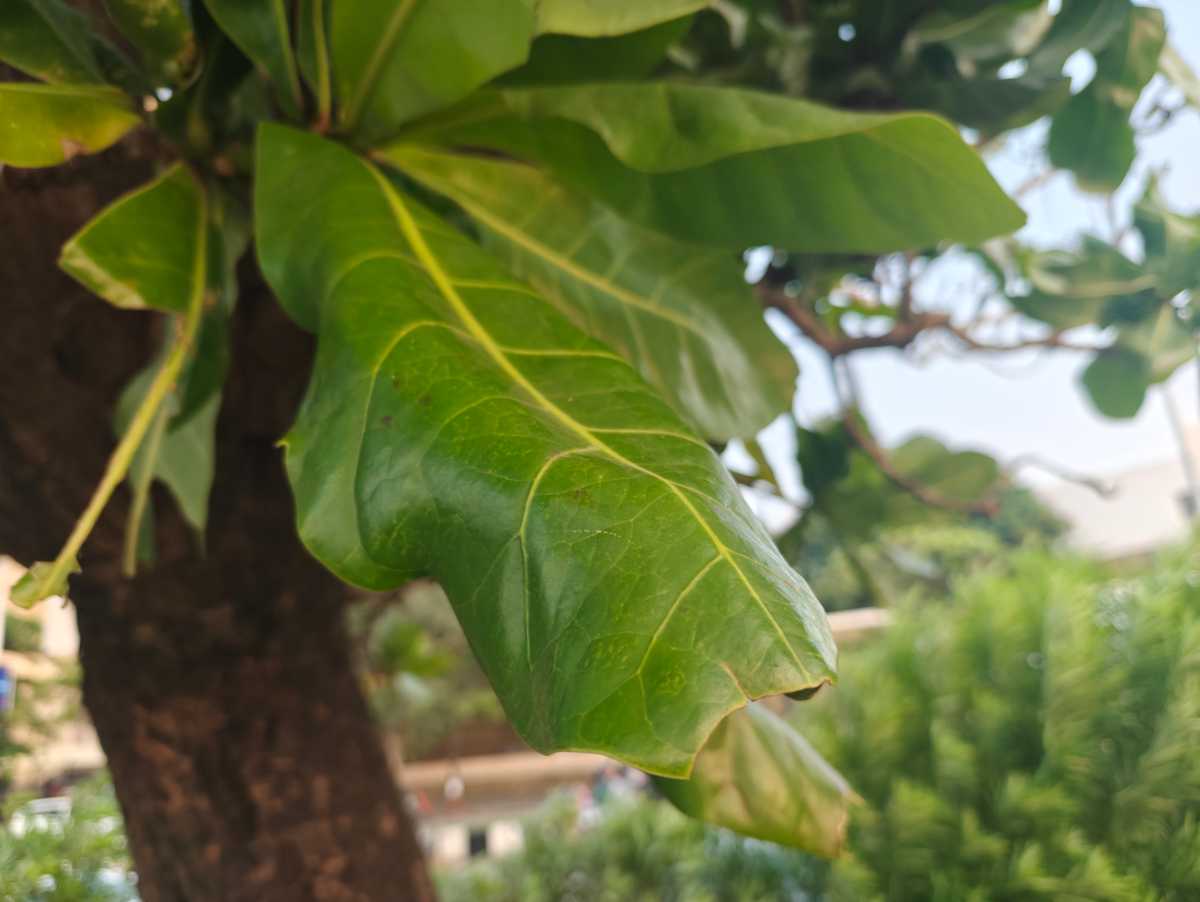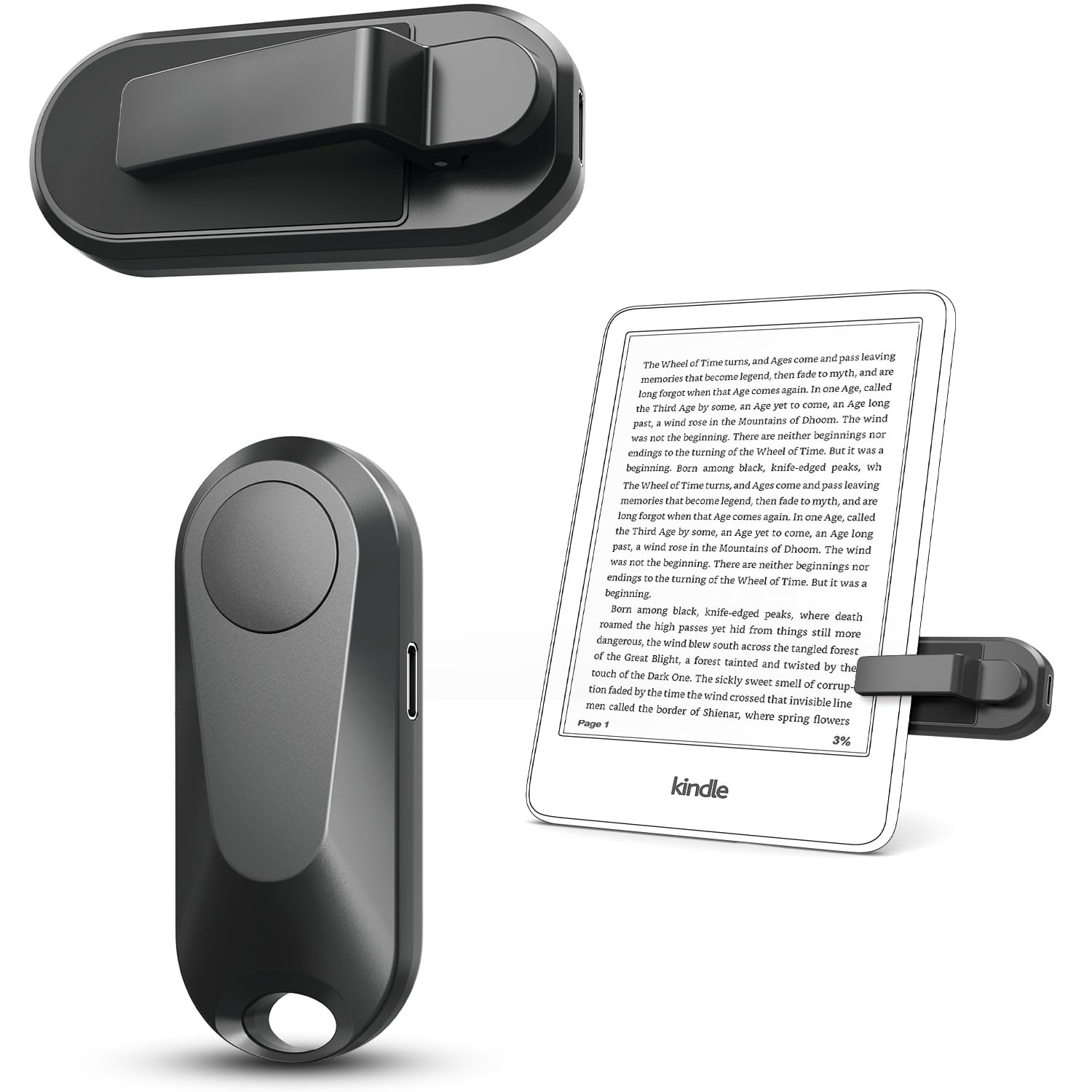An accomplished foldable debut
We’ve had to wait a while for it, but the OnePlus Open stands out among foldables for a variety of reasons. The first is its name: rather than opting for the tried-and-tested ‘Fold’ branding, OnePlus wants the device to be ‘Open for Everything’, hinting at its versatility as phone-tablet hybrid.
But the same can be said of parent company Oppo’s Find N3, which launched at the same time as the OnePlus Open with near-identical hardware and software. And then there’s the simple fact that it took until 2023 for OnePlus to release a folding phone, making it one of the late comers to the party.
However, none of that matters if the OnePlus Open performs well in the real world. While that’s certainly the case, it isn’t quite the genre-defining device you might be hoping for.
Design & Build
- Premium book-style design
- Impressive durability
- Excellent haptics
If you’ve tried a book-style foldable before, the OnePlus Open will be familiar to you. Its design is in keeping with rivals such as the Galaxy Z Fold 5, with a regular phone-sized cover display (6.31in) that opens to reveal a small tablet (7.82in).
Like Samsung’s latest, the Open folds completely flat, meaning it looks great while open (get it?) or closed. And while you will see and feel the crease on the inner screen, it doesn’t affect usability in any significant way.

But durability will always be the top priority on a folding phone. OnePlus claims the Open can last for over 1,000,000 open and close cycles, equivalent to more than 100 folds every day for over 10 years. Of course, I have no way of verifying that after a week of use, but the hinge certainly feels very tough and robust.
OnePlus has carried out a variety of other tests to verify durability, including exposure to 1m drops onto steel, a force of 55lbs and significant bending. It survived all of these unscathed.
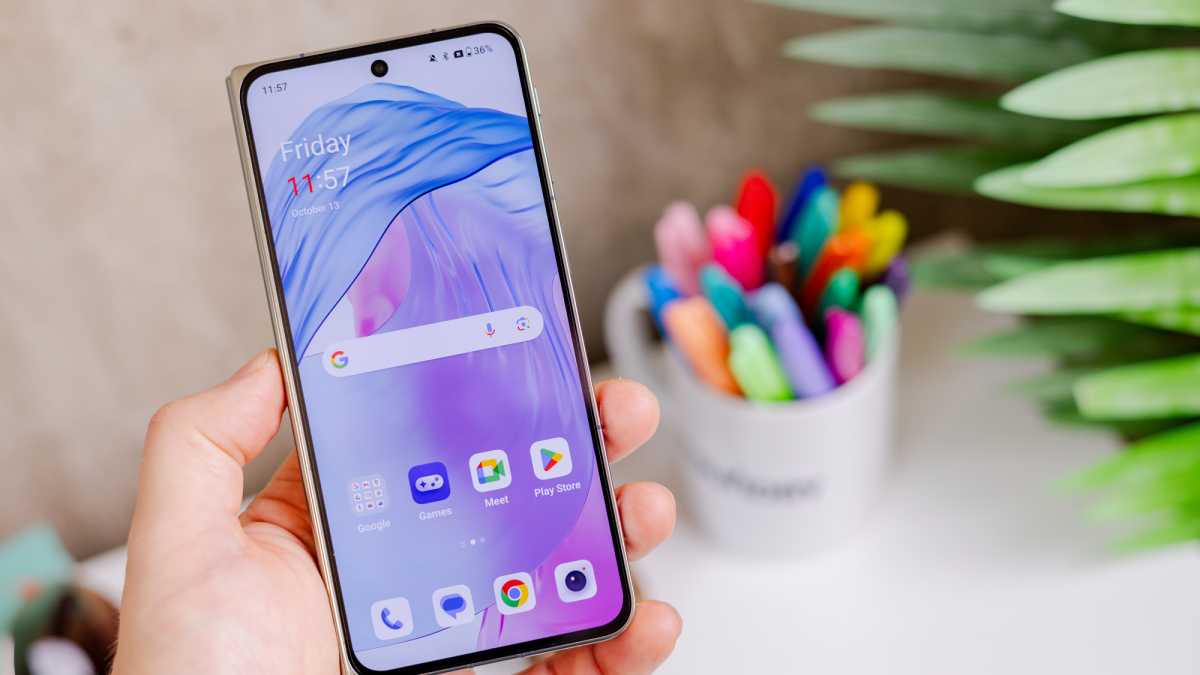
However, it’s not clear if that included scratch resistance. Despite using the Open like I would any other phone, the cover screen picked up a couple of significant scratches within a couple of days. This can easily be rectified by removing the pre-applied screen protector, but I wouldn’t recommend it.
Despite potential for some cosmetic damage, nothing else about the Open feels cheap or fragile. Most people shouldn’t have a problem using it for the full five-year duration of security updates, but it’s worth applying a case.
This is a device that’s attractive from every angle
The Open also has an IPX4 rating, meaning it’s not protected against dust and can only survive exposure to splashes of water. It’s not the full 1.5m submersion for 30 minutes of IP68/IPX8. This is very difficult to achieve on a foldable but Samsung has managed it on the IPX8 Galaxy Z Fold 5.
Crucially, the premium aluminium and glass build hasn’t come at a cost to portability. The green model weighs just 245g, which isn’t much heavier than the hefty 234g Galaxy S23 Ultra.
At 11.7mm when folded, it’s also relatively thin, so can easily fit in the pocket of most men’s trousers. This may still be an issue for women, whose pockets tend to be much smaller, but this is by no means unique to the Open.
However, this is a device that’s attractive from every angle, especially in the dark green ‘Emerald Dusk’ finish. The matte-frosted glass back shimmers attractively as it catches the light, but still does a good job of avoiding fingerprints and other visible dirt.
The ‘Voyager Black’ vegan leather version wasn’t initially available in the UK and Europe, but OnePlus has now launched it in these markets. It’s slightly lighter (239g) and thicker (11.9mm) than the green model, but the grippy back means you can probably go case-free.
Regardless of colour, the defining feature on the back of the phone is that huge circular camera bump. It’s significantly larger than even the OnePlus 11’s, but I quite like it. This rounded theme extends to the corners of the device itself, which makes the Open easier to hold when open or closed.
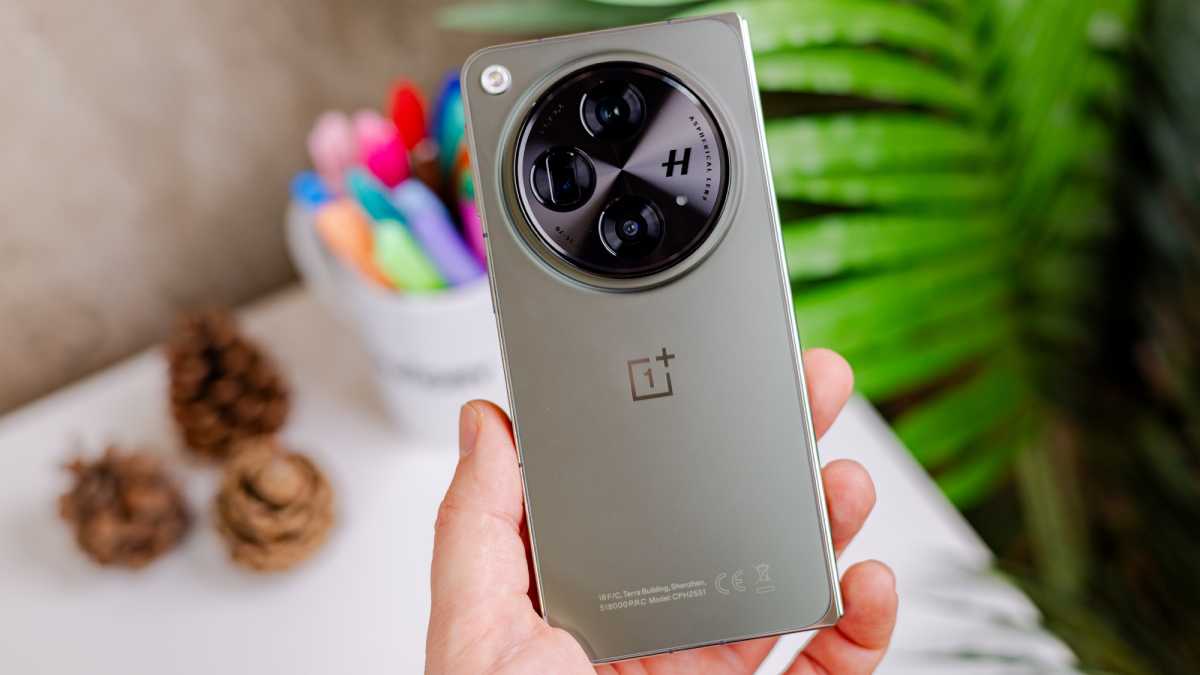
I would say that the camera module is unique, but parent company Oppo’s Find N3 looks exactly the same. In fact, the only real difference between the two is OnePlus’ traditional alert slider.
As usual, this allows you to quickly move between ring, vibrate and silent modes. I find it genuinely useful, but it can easily be ignored if you don’t feel the same way.
What’s more, the limited Apex Edition of the phone features a thinner switch with a carved-out splash of orange in the middle.
On the opposite side (when open) is a fingerprint scanner built into the power button. I wish more companies would go for this rather than the often unreliable in-display versions. On the Open, it’s easy to set up and consistently unlocks the device quickly, so I can have no complaints.
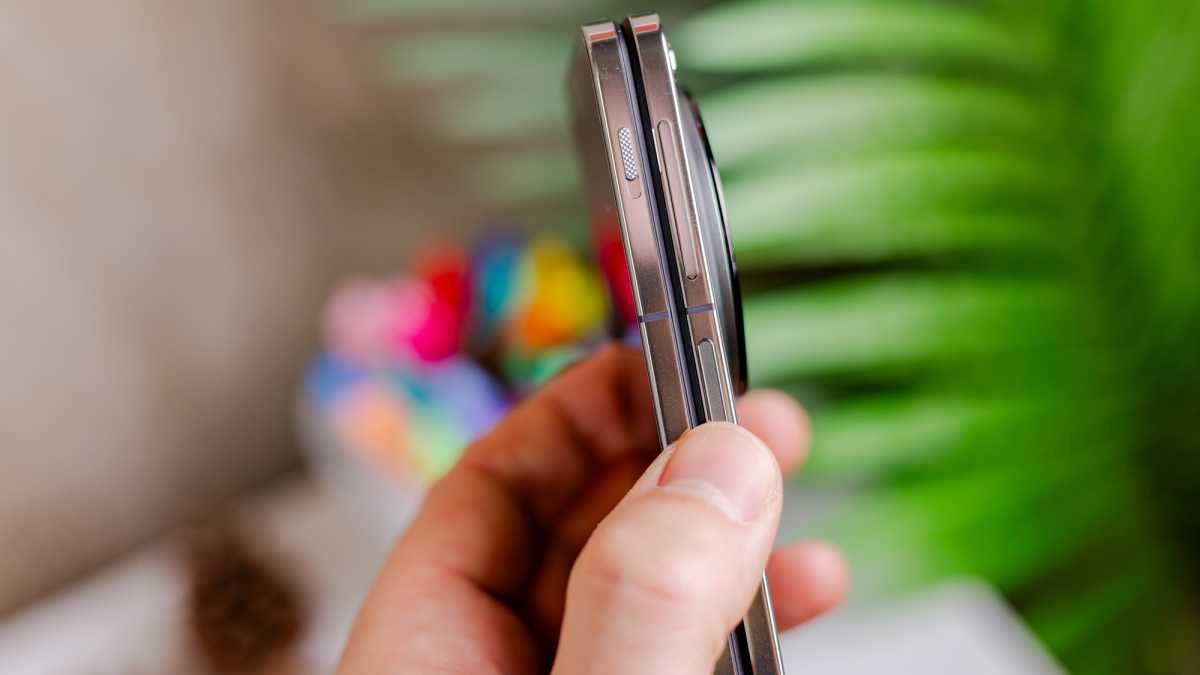
Dominik Tomaszewski / Foundry
It’s also worth highlighting the haptics, which are the best I’ve ever tried. OnePlus has even given them a name – O-Haptics – and they deliver subtle yet realistic feedback across a variety of different scenarios. I initially found the intensity while typing to be too high, but this can easily be adjusted in settings.
Screen & Speakers
- Excellent cover and internal displays
- Not great for content consumption
- Impressive stereo speakers
OnePlus hasn’t spared any expense when it comes to the Open’s displays.
The internal one – the main reason for buying a book-style foldable – is a 7.82in, 2K (2440×2268) OLED panel. And it looks simply superb, combining rich, vibrant colours with plenty of detail. The best smartphones all have excellent displays these days, but I’m glad it’s also possible on one that folds.
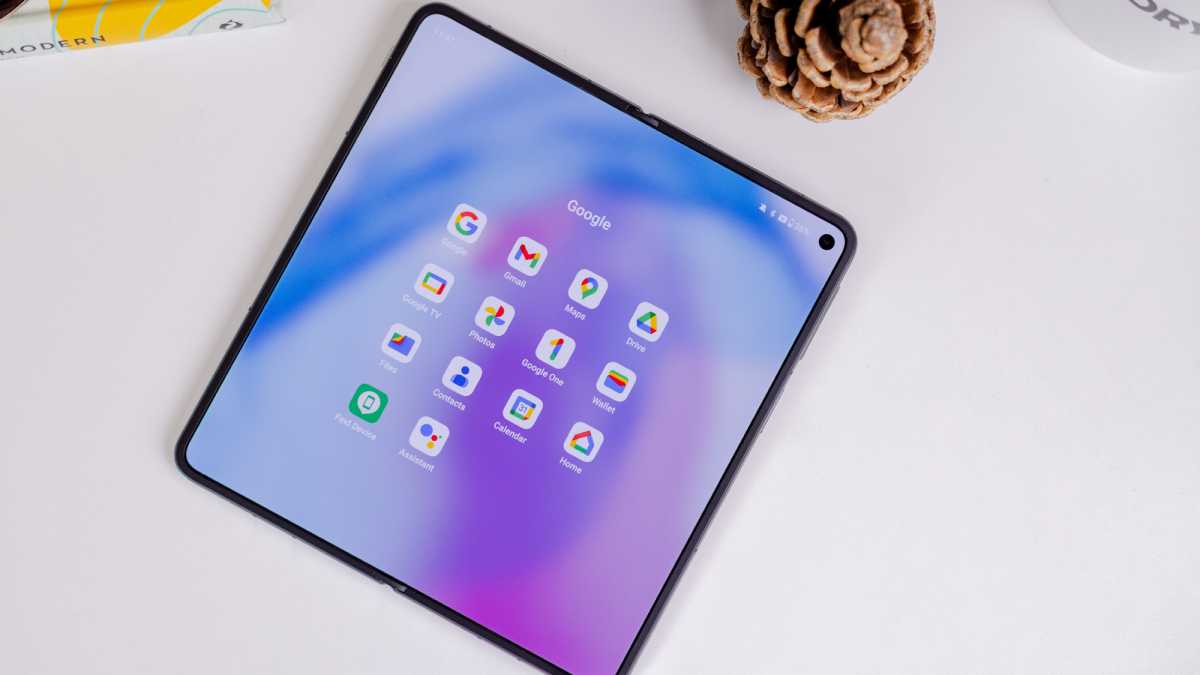
Dominik Tomaszewski / Foundry
Of course, that means there’s a crease all the way down the middle, which you can see and feel when you touch it. Other foldables have done a better job of obscuring it, but I was surprised how little that mattered. I soon forgot the crease was even there, and you can’t see it at all while videos are playing.
But sadly, the latter isn’t a strong point for the OnePlus Open. The unusual resolution gives it a very boxy aspect ratio that doesn’t play nicely with content from the likes of YouTube, Netflix and Disney+. You’ll have to make do with huge back bars above and below, meaning the actual viewing area isn’t much bigger than a regular phone.
However, I did enjoy using the internal screen for most of my usual tasks, including web browsing, messaging/emails and streaming music. It’s also excellent for multitasking, allowing you to comfortably run two (or more) apps side-by-side.
In all of the situations above, you’ll notice the high refresh rate of the screen. It’s a 120Hz LTPO panel, meaning it can automatically go all the way down to 1Hz depending on what you’re doing. As a result, everything feels slick and fluid, without too much of a hit to battery life.
The 6.31in cover display can only operate between 10-120Hz, but it’s just as impressive. The 2484×1116 OLED has a much more traditional 20:9 aspect ratio, mirroring what we see on many regular phones.
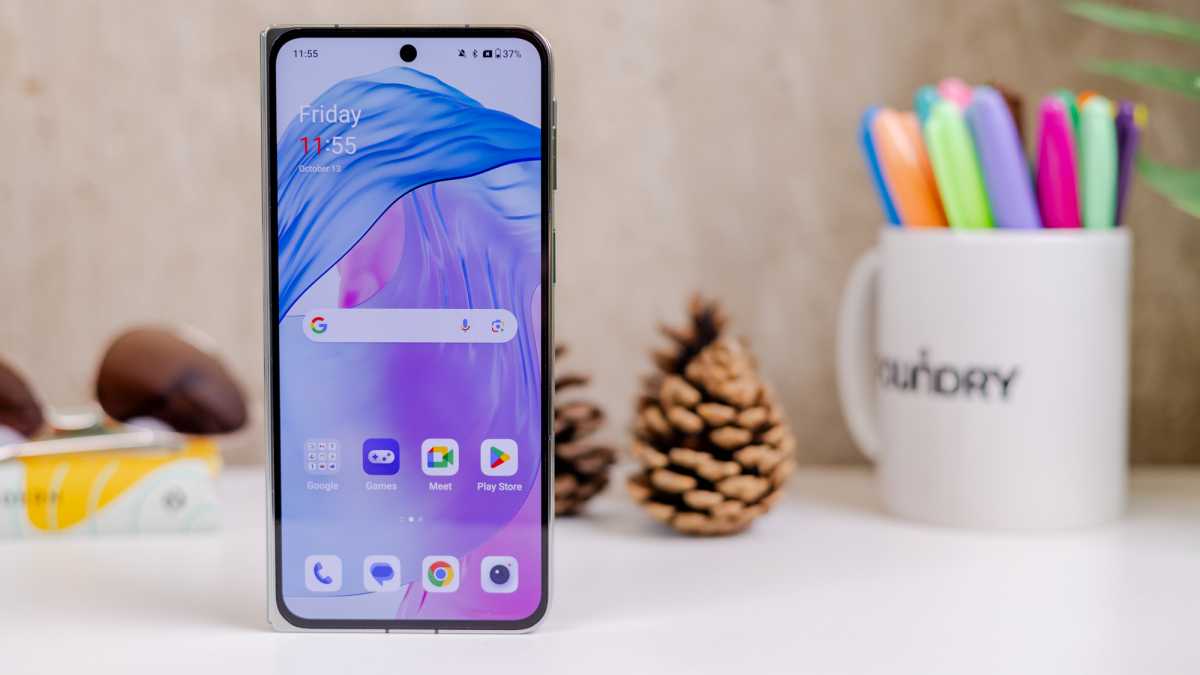
But detail and colour accuracy is still top-notch, and I recorded a decent maximum brightness of 579 nits. The internal display is only slightly behind in that regard, and both are clearly visible in bright outdoor environments.
Another thing that really impressed me was how small the bezels are. They’re tiny around the cover display, and about as small as you could expect inside when you need room for a hinge mechanism.
The Open has four speaker grilles, but only three are actual speakers. OnePlus says this is because the bottom right one is more powerful, so one on the bottom left isn’t necessary.
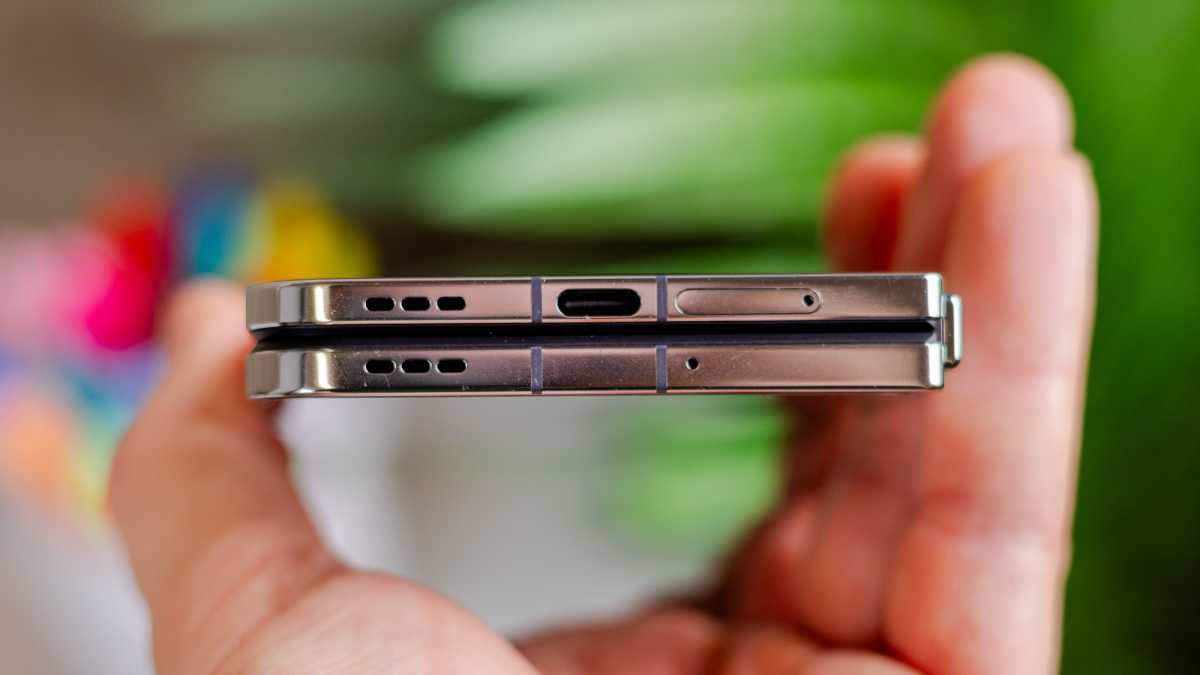
I can’t verify that, but the stereo sound they can produce is better than you might expect. There’s an impressive depth and detail to the audio, whether you’re listening to voices, music or other sounds.
Bass and treble are obvious weaknesses, but they handle mid-range frequencies very well. They’re fine for both casual use and watching movies & TV shows, albeit not as impressive as dedicated tablets such as the OnePlus Pad.
Specs & Performance
- Snapdragon 8 Gen 2 and 16GB of RAM
- Stellar performance in all scenarios
- 512GB or 1TB of non-expandable storage
The Open is powered by the Snapdragon 8 Gen 2 chip, Qualcomm’s latest and greatest at the time of launch. Despite the announcement of a successor (the Snapdragon 8 Gen 3) just a few days later, there was no need for OnePlus to wait.
That’s because the 8 Gen 2 still delivers all the performance you need and then some. Alongside 16GB of the fastest LPDDR5X RAM, it’s supremely fast across almost any task. OnePlus says the RAM can be expanded up to an additional 12GB, but it hasn’t said how.
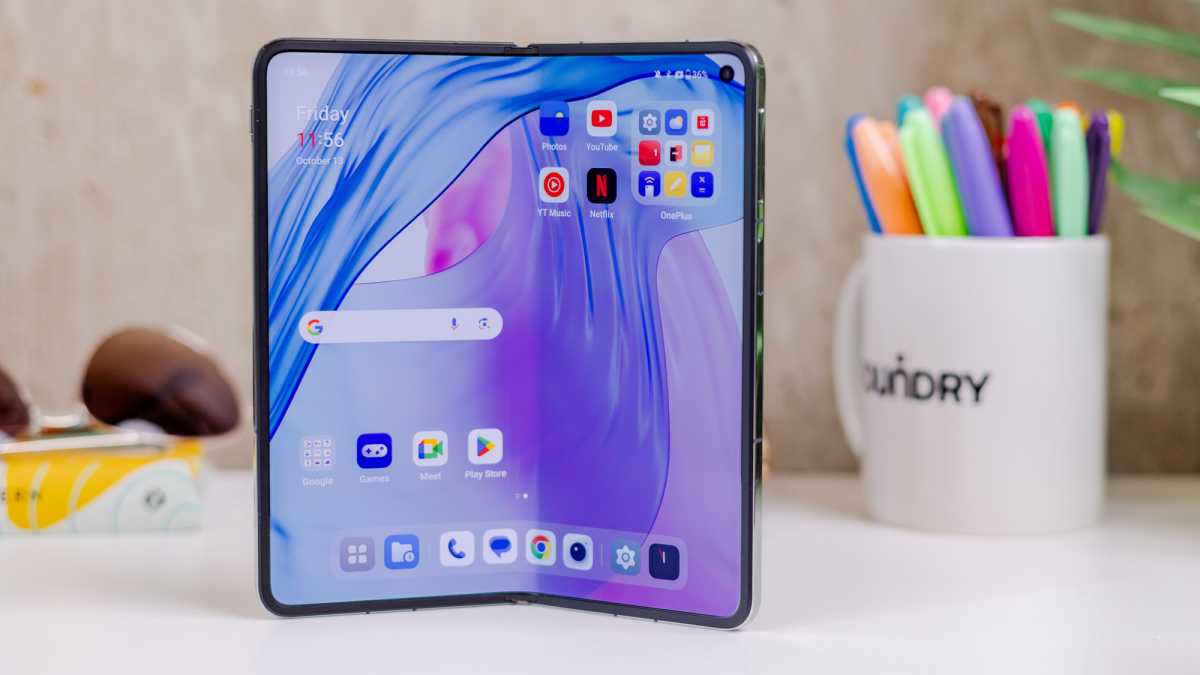
I used the Open for everything I’d typically use my phone for, from web browsing and scrolling social media to messaging and taking photos. The only slowdown of any description was a couple of slight hesitations when opening apps, but I think that’s related to software, and I haven’t experienced it since installing a recent update.
Multitasking, one of the key strengths of the Open, was also very fast and reliable. OnePlus claims you can run a staggering 44 apps simultaneously, and from testing the device I can see why.
The top-tier performance also makes the Open a potent gaming machine. While playing demanding titles such as Call of Duty: Mobile, Asphalt 9 and Rocket League Sideswipe, gameplay remained smooth and lag-free throughout.
They also handled the unusual aspect ratio on the inner display well, so I’d argue the experience here is even better than on dedicated gaming phones for short gaming sessions. However, longer sessions are where you’ll miss the more advanced cooling systems on those handsets.
OnePlus Open benchmarks
My review model had 512GB of storage, but there’s also a 1TB version. Both storage options will be plenty of space for most people. I barely made a dent in this during my testing time, though the lack of support for microSD expansion is a shame.
But the Open is well future-proofed when it comes to connectivity. Alongside 5G, you also get Bluetooth 5.3 and Wi-Fi 7 support. The latter is yet to fully roll out, but it’s nice to know you’ll be able to get the fastest speeds.
Cameras & Video
- Impressive triple rear cameras
- Average front-facing cameras
- Super-stable 1080p video
The OnePlus Open has a total of five camera lenses in three locations. But the triple rear setup, designed in collaboration with camera company Hasselblad, is undoubtedly the most important.

Dominik Tomaszewski / Foundry
It’s led by a 48Mp Sony LYT-T808 main sensor, which can produce consistently great shots in good lighting. Detail and dynamic range from the main lens are superb, and it handles exposure very well.
Colours are generally true to life, rather than the highly saturated look we get on some smartphones. But I personally prefer this, as it feels authentic and can easily be edited afterwards. It’s still a great point-and-shoot camera though – many photos don’t need anything done to them.
Detail and dynamic range from the main lens are superb, and it handles exposure very well
In general, the Open fares better when there are clear subjects in the frame. I particularly enjoyed the shots it took of architecture, with the 48Mp ultrawide better suited to landscape photography. Unlike many camera phones, the quality of images is only a small step down compared to the main lens, and the 114-degree field of view often comes in handy.
But the 64Mp telephoto is arguably the most impressive of the lot. It supports optical zoom up to 3x, while the digital version goes all the way up to 120x. It’s the hybrid of optical and digital at 6x that delivers some of the best zoom photos I’ve seen on a smartphone, though, and the way it can retain so much detail is superb.

The camera app can also automatically detect macro shots, giving them a lot more clarity and vibrancy than you’d get ordinarily.
However, low-light shots are more of a struggle across all three lenses. Even with night mode enabled, shots remain quite dim and with a lot of noise.
But the portrait mode is very good, with subjects well exposed and generally good edge detection. It’s also great that you can adjust the amount of background blur after the photo is taken.
This is my preferred way of taking selfies, as you get a lot more detail than from either of the front-facing cameras. The cover has a 32Mp lens, which handles colours and exposure well but tends to omit details in the background. It’s a similar story for the 20Mp camera inside, which I’d only recommend using for video calling.
The Open supports video capture up to 4K at 30- or 60fps. But I’d recommend the Ultra Steady mode, which is limited to 1080p at 60fps but makes full use of OIS (optical image stabilisation) on the main lens for impressively smooth footage, even with lots of movement.
Battery Life & Charging
- 4805mAh battery
- Battery life could be better
- Fast 67W charger in the box
The OnePlus Open has a 4805mAh battery, split across two separate cells. Before testing, I was concerned that this wouldn’t be quite enough to ensure great battery life, and so it has proved.
Most people will still get a full day of usage on a single charge, most of the time. But with lots of high brightness, GPS, mobile data and use of the internal display, a full day of battery life can be a struggle. You can of course turn on the battery saver mode, but that significantly limits performance.
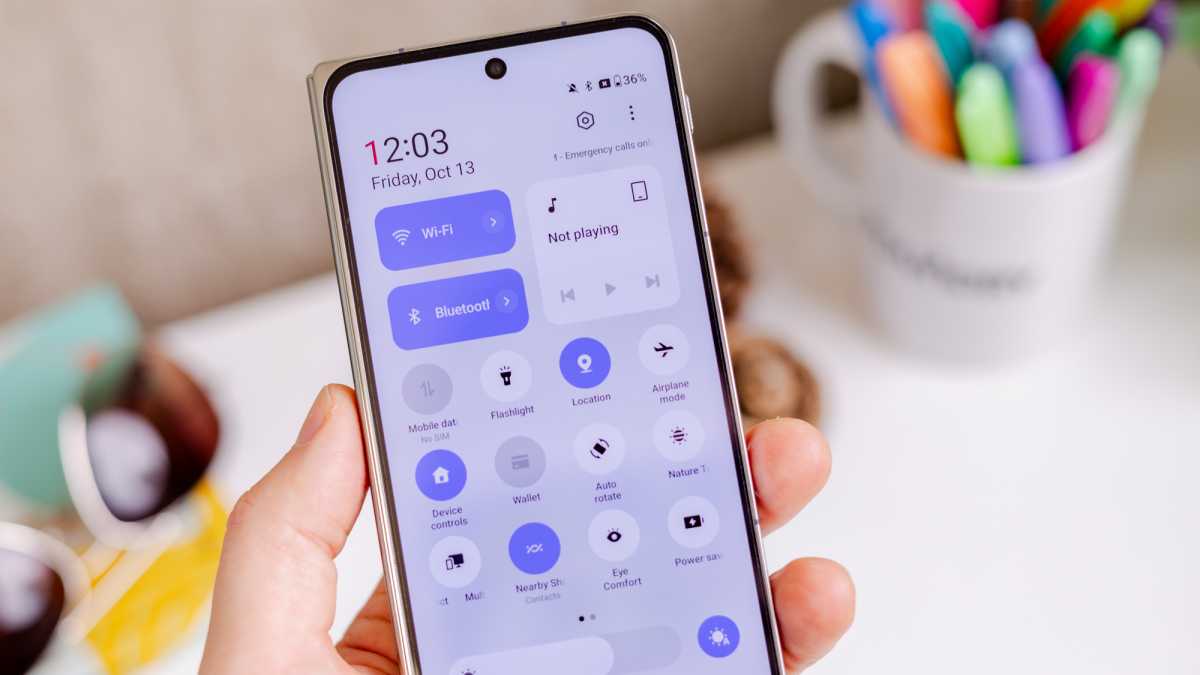
I understand the difficulty of fitting a large battery into such a slim device with a foldable screen, but it’s a shame to see a capacity that’s smaller than many regular smartphones.
The good news is that if you can make it to a power source, you won’t need to be there for long. The OnePlus Open supports 67W fast charging, and the necessary charger is included in the box. I recorded 50% in 15 minutes, with the battery full in just under 45 minutes.
With lots of high brightness, GPS, mobile data and use of the internal display, a full day of battery life can be a struggle
However, you will have to make do without wireless charging, which is a big miss for some people.
Software & Features
- OxygenOS over Android 13
- Impressive dedicated foldable features
- Five years of security updates
Out of the box, the Open runs Android 13. But this is with OnePlus’ OxygenOS skin over the top, which significantly changes its look and feel compared to the likes of a ‘vanilla’ Google Pixel.
While you retain full Google access, the notification shade looks quite different and key apps such as Settings and Camera have been redesigned. OxygenOS isn’t quite as clean or slick as Android on Pixel phones, but it’s still very intuitive and easy to use. Even if you’ve never used a OnePlus phone before, it won’t take long to adjust.
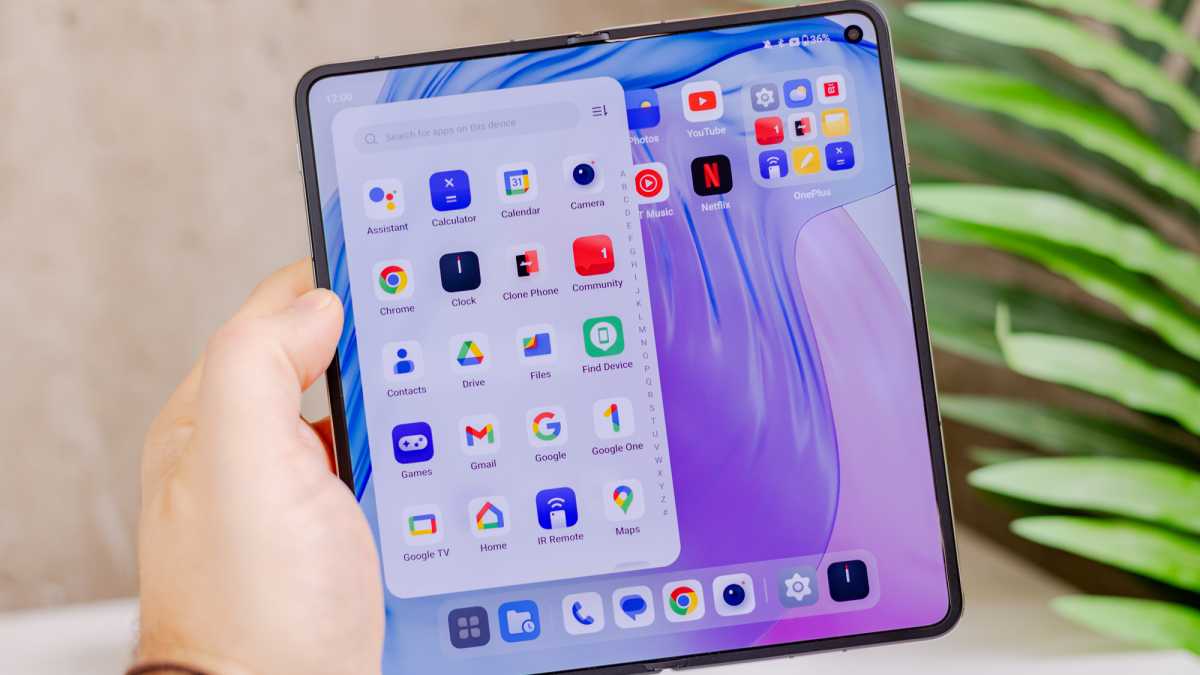
Visually, OxygenOS is extremely similar to ColorOS, the version of Android found on Oppo phones. But the key difference is you get much less bloatware. OnePlus has a handful of its own apps pre-installed, such as the OnePlus Store and O Relax (free relaxing audio), but all can easily be uninstalled.
OxygenOS isn’t quite as clean or slick as Android on Pixel phones, but it’s still very intuitive and easy to use
There are also a few extra software tricks designed for the internal display. The taskbar instantly shifts to a tablet-style interface, with an app launcher, files and recent apps added to the usual dock.
The most obvious feature is split-screen multitasking, which is activated by opening one app and literally splitting the screen in half using two fingers. You can then add a third by dragging it out of the taskbar, and even save app groups to the home screen.
This is where you’ll see what OnePlus is calling ‘Open Canvas’ in action. It allows you to display apps beyond the edges of the display, moving them into view with a tap on when they’re needed. A four-finger pinch shows them all at once.
Drag-and-drop support is also here, and means you can quickly highlight files from one app (already open or in the taskbar) and instantly move it to another. Most relevant apps support this feature, and it works very well.
The same can be said for the multitasking experience as a whole. A lot of time and effort has clearly gone into the software – as it should be on a foldable – and it makes the Open a realistic option for productivity. The smaller screen means it still can’t quite compete with tablets for most people, though.

And unfortunately, it’s not always as impressive with one full-screen app. Those from OnePlus and some third-party apps (such as WhatsApp and Facebook) work well, but many from Google and other developers are not optimised and simply larger versions of the smartphone app. This makes them quite awkward to use at times.
The Open received an update to Android 14 in early 2024. OnePlus promises an additional four years of Android version updates and five years of security updates, taking you up to 2029.
This isn’t as good as Google’s seven years, but the Open also has an A rating from TÜV SÜD for 48-month Fluency. It supposedly ensures the device will still be performing at a high level after four years of daily usage.
Price & Availability
The OnePlus Open costs £1,599/$1,699. That’s for the only configuration, with 16GB of RAM and 512GB of internal storage, though you can choose between Emerald Green and Voyager Black finishes.
It’s only available from OnePlus in the UK, OnePlus, Amazon and Best Buy in the US.

There’s also the limited OnePlus Open Apex Edition with a striking Crimson Shadow design that’s priced at £1,799/$1,899.99. Pre-orders start on 27 August until open sales from 3 September.
The first 96 customers in the UK who pre-order the OnePlus Open Apex Edition will receive a free B&O Speaker, worth £259. All pre-orders will receive an instant £200 discount, as well as a free gift of either a OnePlus Watch 2 (worth £329) or a free pair of OnePlus Buds Pro 3 (worth £199).
UK customers who purchase the device after September 3 will receive the same £200 discount and be rewarded with a free pair of OnePlus Buds Pro 3 only. And if you buy it before 3 October, you’ll be eligible for an additional £100 trade-in coupon for a traded-in device.
This version boasts 1TB of storage, 16GB of RAM, and a few subtle hardware tweaks, such as a redesigned alert slider with an orange accent. You can get it from OnePlus in the UK or OnePlus in the US.
No networks are selling the phone on contract in the US, so you’ll need to pair it with a SIM deal. If there are options in the UK, you’ll see them below.
The outright price is cheaper than some other key book-style folding phones. Compared to the Samsung Galaxy Z Fold 5 (from $1,799.99/£1,748) and Google Pixel Fold (from $1,799/£1,749), it represents good value for money.
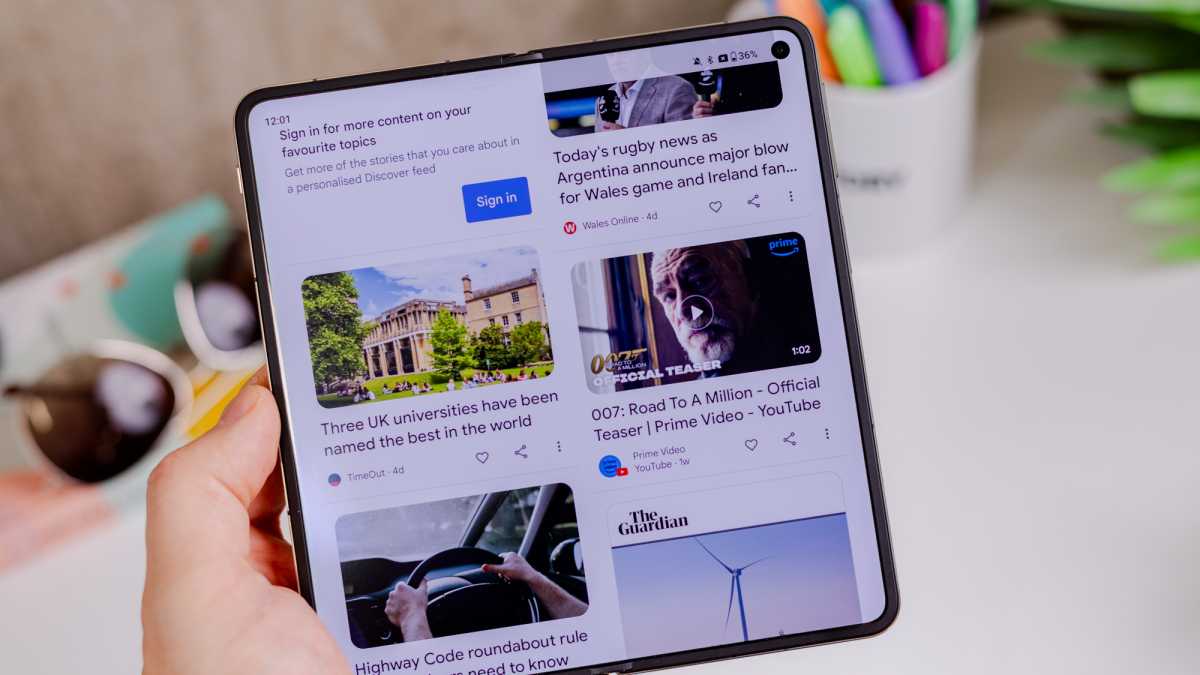
Should you buy the OnePlus Open?
The OnePlus Open is a fantastic foldable in many ways, but it doesn’t quite give the book-style device mainstream appeal yet.
The big barrier remains the price, unless you can get a more affordable contract deal once it goes on sale (not guaranteed). Battery life is mediocre and some third-party apps aren’t optimised for the internal display, but there’s still so much to like here if you do want to jump feet first into the world of book-foldables.
Performance from the Snapdragon 8 Gen 2 chip is superb, even though it’s no longer the latest and greatest, and both the displays are fantastic to use in most scenarios. Then there are the cameras, with the main, ultrawide and telephoto all impressive across a range of scenarios. You also get great speakers and a 67W fast charger in the box.
Considering this is a first-gen device, OnePlus has done an excellent job. But it remains a foldable that only tech enthusiasts should seriously consider… for now.
Specs
- Unfolded: 153.4 x 143.1 x 5.9 mm
- Folded: 153.4 x 73.3 x 11.7 mm
- 245g
- 6.31in 120Hz LTPO AMOLED cover display
- 7.82in 120Hz LTPO AMOLED foldable internal display
- Qualcomm Snapdragon 8 Gen 2
- 16GB RAM
- 512GB storage
- Rear cameras: 48Mp main f.1.7, 64Mp f/2.6 3x telephoto, 48Mp f/2.2 114° ultra-wide
- 32Mp f/2.4 inner selfie camera
- 20Mp f/2.2 cover selfie camera
- Up to 4K video recording
- 4805mAh battery with 67W charging
- Side-mounted fingerprint scanner
- Wi-Fi 7
- Bluetooth 5.3
- 5G
- NFC
- Available in Emerald Dusk, Voyager Black

